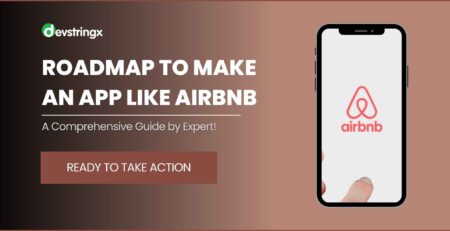Designing a User-Friendly Restaurant App: Best Practices and Tips – DS
How to Design a User-Friendly Restaurant App?
In today’s rapidly evolving world, where convenience and user experience are of utmost importance, restaurants are increasingly turning to mobile apps to enhance customer engagement, streamline operations, and strengthen their market presence. However, creating a restaurant app comes with its share of challenges. It’s not about digitizing menus or enabling orders; it’s about crafting an experience that connects with users on a personal level, simplifying interactions and encouraging repeat visits.
Recognizing the role of the app in driving a restaurant’s growth requires careful strategic planning, innovative thinking, and a focus on customer-centric design. Through this blog, we will explore precise steps and helpful tips for businesses looking to create an easy-to-use restaurant app.
1) The Design Journey: Research and Strategy
Creating a user restaurant app begins with market research and strategic planning. Understanding your target audience – their preferences, behaviors, and pain points – is essential. Implementing research methods such as surveys, focus groups, and user interviews helps gather data. By analyzing competitors’ apps, you can identify industry standards, gaps you can fill, and unique areas where your app can stand out.
To create an app for your restaurant, it is crucial to gather insights that will help develop detailed user personas. These personas should represent different types of users and provide a clear understanding of their demographics, behaviors, needs, and motivations. It’s important to note that these personas are not placeholders but serve as the foundation for building your app’s features, design, and interactions.
2) Laying the Groundwork: Defining Core Features
Lay the groundwork by defining the core features that your restaurant app should encompass. Beyond offering menus and ordering capabilities, your app should strive to be a platform catering to various user needs.
a) Onboarding
Ensure an intuitive signup and login process to minimize bounce rates. You may also want to explore social media integration for access.
b) Customizable Digital Menus
Enhance the user experience by providing high-quality images, detailed descriptions, and customization options for their orders. This interactive approach allows users to have control over their menu choices.
c) Effortless Ordering and Checkout
Simplify every step of the ordering process – from adding items to the cart to selecting a payment method. Integrating payment gateways adds convenience for users.
d) Real-Time Order Updates and Tracking
Keep users engaged by providing real-time notifications regarding their order status, along with GPS-enabled tracking options.
e) Loyalty Programs and Promotions
Encourage customer loyalty through points-based systems discounts tied to usage, profile information, or special offers specifically designed for repeat customers. By considering these aspects when developing your restaurant app, you can ensure an enriching user experience that meets user needs while fostering engagement with your brand.
f) Feedback Mechanism
To improve user experience and gather feedback, it is vital to have a feedback mechanism that allows users to rate and review services. This feedback can provide insights for improvements.
g) Reservation Management
For establishments that offer dine-in services, it is beneficial to include a feature that enables users to make reservations or join waitlists, enhancing convenience for users.
Good to Read:- A Step-by-Step Approach to Develop A Restaurant App
3) Crafting the User Experience (UX)
When designing the app’s user experience (UX), it is crucial to follow design principles and ensure accessibility. The UX directly affects customer satisfaction and retention rates.
a) User-Centric Design
One of the significant principles is user-centered design, which means prioritizing convenience and ease of use for users. The navigation should feel natural and straightforward.
b) Consistency
Using consistent typography, color schemes, and button styles throughout the app creates a look and feel. It helps users feel comfortable and reduces confusion.
c) Minimized Cognitive Load
To avoid users with information overload, it is best to display only necessary elements on the screen. More complex options can be presented using disclosure when needed.
d) Fast Loading Times
Optimizing images and content is essential for fast loading times. It makes the app load quickly, ensuring respect for users’ time and attention spans.
e) Error Prevention and Recovery
Implementing error prevention measures is also crucial. By incorporating safeguards against user errors and providing instructions for recovery from mistakes, you enhance user experience.
Additionally, making your restaurant app accessible ensures inclusivity for all individuals, including those with disabilities. It’s all about designing with empathy in mind. Elements like using easy-to-read fonts incorporating voice commands, ensuring screen reader compatibility, and selecting color palettes that are friendly to those with color blindness are essential factors.
4) UI Design and Brand Integration
While the user experience (UX) focuses on the functionality and user journey of an app, the user interface (UI) design emphasizes its elements and overall presentation.
a) Appealing Color Schemes
Colors have a great impact on emotions and behaviors. It is crucial to choose a color palette that aligns with your brand but also sets the desired mood and effectively guides users through the app.
b) Readable Typography
Legibility is vital. Hence, opt for fonts that complement your design while remaining easily readable across screen sizes.
c) Intuitive Icons and Buttons
Incorporate design elements that are self-explanatory and familiar, utilizing symbols that require no explanations.
d) High-Quality Imagery
Eye-catching images of food can captivate users’ attention. Therefore, consider investing in photography to showcase your offerings in the possible light.
An app should serve as an extension of your restaurant’s brand, reflecting its philosophy, ambiance, and quality. Uniformity in logo usage, color schemes, and language ensures that the app reinforces your brand identity while seamlessly transitioning from the physical restaurant to the digital space.
Good to Read:- Why Do You Need Mobile Apps for Your Restaurant?
5) Technology Stack
The technology stack you choose for your app plays a crucial role in its performance, scalability, and security. Whether you decide to go with native app development, cross-platform solutions, or progressive web apps, it will have a significant impact on how the app functions on devices and operating systems.
Prioritizing performance optimization ensures that users can interact with the app smoothly and without any delays. It involves optimizing data usage, employing coding practices, and regularly updating the app based on user feedback and technological advancements.
When it comes to security, there is no room for compromise – especially when handling payment information of users. Hence, it is essential to implement security protocols such as data encryption, secure user authentication methods, and compliance with data protection regulations.
6) Post-Launch: Feedback and Continuous Improvement
After launching the app, it enters a phase where real-world user interactions take place, which is why, collecting feedback from users becomes crucial during this stage. You should monitor the performance of the app and track user behavior within the app to gain insights. For this purpose, you can utilize tools like in-app analytics, heat maps, and customer reviews to identify areas that users appreciate or find lacking.
Regular updates based on this feedback are essential for refining the app by fixing bugs and introducing features that enhance the user experience. This iterative process is fundamental in keeping the app competitive while meeting evolving user needs.
Conclusion
In conclusion, creating a restaurant app that’s easy for users to navigate and enjoy is a process that involves combining technical expertise, understanding the needs of users, and incorporating creative design elements. It is a journey of development and adaptation as we respond to shifting market trends, advancements in technology, and most importantly, meeting the expectations of our users. By embracing these recommended practices and tips, restaurants can significantly enhance their presence by providing an app that brings joy to customers’ experiences while fostering loyalty. In this age of dining out, an app isn’t just an optional extra for restaurants—it’s a crucial ingredient for achieving success.
Transform your restaurant experience—hire us for seamless restaurant app design and development!














